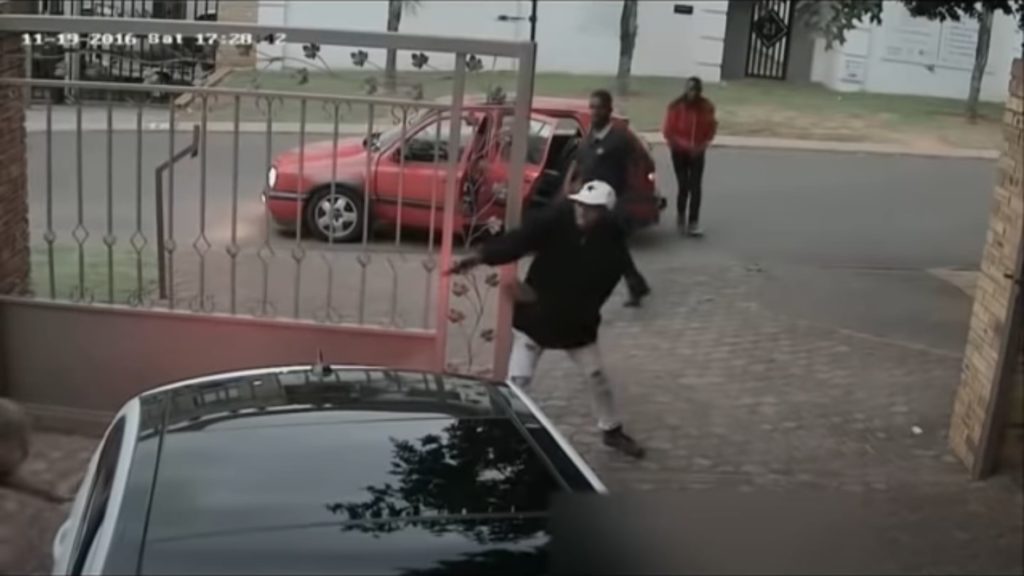There has been an increase in the number of hijackings taking place on South African roads because there are more cars back on the road.
This spike is the result of criminals taking the opportunity to pounce on unsuspecting motorists according to insurer Dialdirect, and they urge South Africans to be extra cautious while driving.
“Hijackings are unfortunately a prevailing part of our crime story, with over 30 000 hijackings of motor vehicles, including trucks, taking place in a single year,” said Bianca de Beer, the spokesperson for Dialdirect.
Hijackings have increased by 20 percent from 2019 to 2020, according to Dialdirect’s claims data, said De Beer.
Richard Brussouw has been investigating hijackings for many years as the director of the National Hijacking Prevention Academy (NHPA) — a private company established in 2001 that specialises in hijacking prevention training and advanced driving training.
NHPA recently published an in-depth analysis of hijackings that occurred between August 2019 and July 2020.
The NHPA says that there has been a dramatic increase in vehicle hijackings because anti-theft devices, such as immobilisers and gear-locks, have made it more difficult to steal motor vehicles.
“Vehicle hijacking is an organised business, run according to business principles and based on thorough planning,” says NHPA. “Specific vehicles with specific characteristics are ordered beforehand and efforts must be made to meet the requirements of such orders.”
The report highlights some key hijacking trends:
Hijackings take place on every day of the week but they tend to peak on Fridays, while more hijackings take place from 12pm. Motorists are most vulnerable to hijacking between 4pm and 8pm, as this when most car theft takes place.
Hijackers look for areas where vehicles are moving slowly or come to a standstill; they also prefer locations that have many easy escape routes. Most hijackings happen in residential driveways.
Other hijacking hotspots include traffic signs or intersections, schools, petrol stations, parking areas and passenger pickup or drop-off points.
The NHPA analysis found that the firearms used most often in hijackings are pistols and revolvers but there is a small percentage of crimes committed using knives, high caliber guns and shotguns or even bare hands.
The NHPA and Dialdirect recommend the following tips to avoid falling victim to hijacking:
– Be alert and pay attention to your surroundings wherever you are. Hijackings do not only occur in hotspot areas, therefore its important to remain vigilant no matter where you are, especially if your vehicle is moving slowly or coming to a complete stop.
– Familiarise yourself with your neighbours and keep your driveway free of obstructions that criminals can hide behind and ensure that it is well lit. Remember to lock your doors while driving.
– Plan out your journey and avoid driving at quiet hours and through unsafe areas. Regularly switch up your driving routes and habits to avoid becoming a predictable target.
– If a suspicious vehicle is behind you make a few false turns. If you still suspect that you are being followed drive to the nearest police station or public area.
– Automatic gate: Stop in the road parallel to your gate, this gives you an escape route. Once the gate is open drive into the yard and stop the vehicle just on the inside. Wait for the gate to shut before parking the car.
– Non-automatic gate: Stop right before the gate and check to see if it’s safe before leaving the vehicle. Leave the engine running, so that in the event of an attack the hijacker doe not have to approach you to take the vehicle.
– Time your stops at traffic lights to avoid coming to a complete stop. When you stop behind a vehicle at a traffic light or stop sign, ensure that you have enough room to escape in the event of an attack. If you can see the rear tyres of the vehicle in front of you it makes it harder for hijackers to box you in.
– If you are followed by a vehicle with a blue light, reduce your speed, turn on your emergency lights and indicate that you want them to follow you. Stop at a safe place but do not drive home.
– Criminals use jamming devices to prevent the locking system of vehicles from doing their jobs. When you leave your vehicle make sure the doors are locked by checking the handles before walking away. When you return to your vehicle, immediately lock the doors and don’t rely on the vehicle to lock automatically.
Picture: screenshot from video

